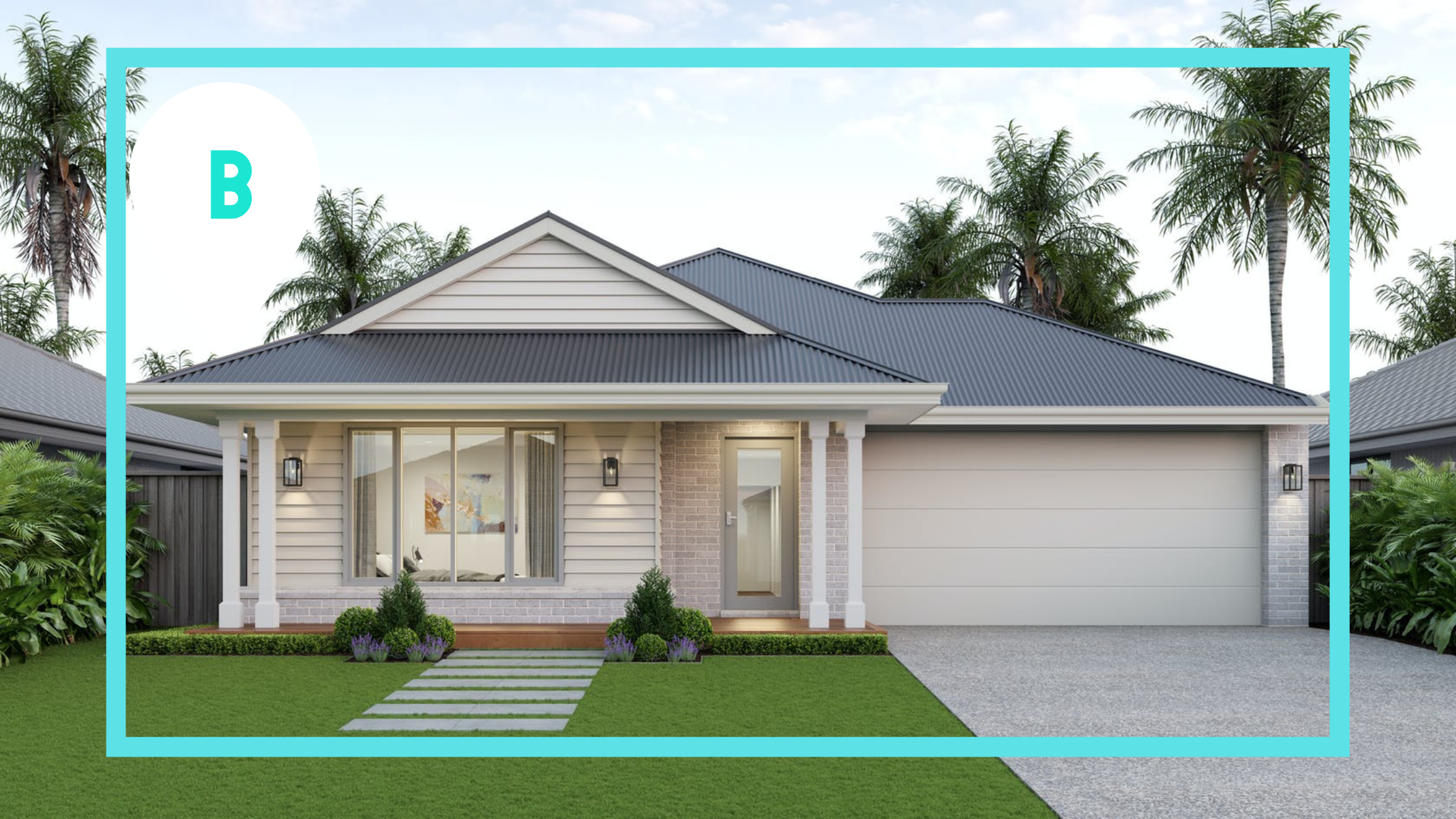Owning a house is the dream for many Australians, but deciding what exactly one wants in a house can be an overwhelming concept. Display homes are built to show off a builder’s work and a specific design. It allows potential homebuyers to visit, discover what a floorplan looks like in real life, and get a visual, real-life idea of size, feel and atmosphere. Think of it as a sample you can try before you buy.
On the surface this all seems pretty great, however, there are some traps and pitfalls when it comes to visiting display homes. Remember, the other purpose of a display home is to create business for builders. First-home buyers especially are particularly vulnerable to making mistakes when they find a display home that looks perfect for them. Let’s take a look at some of the common traps and pitfalls you need to be aware of before visiting a display home.

Trap One: Setting Unrealistic Expectations
Avoid Falling for the Display Homes ‘Dream Home’ Illusion
We understand that when thinking about your new home, it’s easy to get swept up in the moment. While it’s okay to dream big, it’s also vital to remember that display homes are essentially an advertisement for the builder. Just like the burger on the billboard always looks nicer than the one you get in the drive-through, a display home is designed to showcase a home in its best light.
The illusion the builder is putting forward is specifically designed to highlight a layout’s strengths and hide its flaws. Everything from advertised prices to the staff working at the display home are there to convince you to work with the builder and therefore aren’t an unbiased source. Therefore, without a little wariness, it’s easy for homeowners to get unrealistic expectations after visiting a display home.

Understand the Difference Between Standard Features and Upgrades
Another thing to be wary of with display homes is that not everything you see may be a standard feature. Builders will often add expensive upgrades to a display home to a) improve the overall look of the home, and b) entice potential buyers into wanting the extra before realising they’ll need to pay extra.
The best way to know what is standard and what is an extra is to research the builder beforehand and to ask staff members working at the display locations about which features are standard. Also, ask how much the extras will cost and what alternatives are available.
Trap Two: Forgetting Your Practical Living Needs
Avoid being swayed by the display home good looks over function
When it comes a house design, the functionality of the floorplan is key. A great-looking house and woo even the best of us, but it’s important to remember that your home is where you’ll spend most of your life. Consider whether the layout you’re inspecting will meet all your practical needs. A nice-looking house is great, but it shouldn’t come at the cost of functionality.

Assess the display home layout against your lifestyle
No matter how impressive a display house is during your visit, you need to consider how it will adapt to your needs and lifestyle. Is this a layout you can imagine performing your everyday activities in? Will it suit you in the future (for example, if you’re planning a family, will this home provide the necessary space for little ones)?
If you have a house or even live in a rental, think about what you like about your current home and what you’d love to change. Does this floorplan meet both of those criteria?

Trap Three: Misjudging Size and Space in Display Homes
Deceptive Space
Most, if not all, display home locations will be completely furnished, include decorations and have features to help give an idea of what the house may look like when a family is living there. While this is all well and good, it can be deceptive when it comes to providing an accurate idea of how big a room is. Anyone who has moved house knows an empty living room or bedroom looks very different than when furnished.

Measuring for Your Needs
Your eyes can easily be deceived, and trying to gauge how big your furniture is from memory alone is a lot more difficult than you may think. It’s not uncommon for people to misjudge the size of a piece of furniture, the room or both and end up with a bed taking up too much space.
Sometimes, the best solution is the simplest. Before making any appointment with a display centre, measure any piece of furniture you’re likely to take with you (beds, couches, appliances like a fridge). When you visit a display home, ask for the dimensions of each room or even bring a tape measure with you to help you get a visual in your head.

Trap Four: Underestimating Costs and Budget Overruns

Don’t forget what your Budget is
Financial problems are the number one speedbump first home buyers run into during their building journey. There’s no getting around building a house is an expensive endeavour, however, there are ways to minimise the risk of costs getting out of control.
First of all, talk to your financial advisor and get a realistic idea of the budget. Do this before doing anything else as this will set your limitations and provide you the boundaries you need to follow. It’ll also help you avoid visiting any display home that far exceeds what you can afford.
When creating a budget, account for all the expenses you’ll need to cover during your build, and try to have a little extra cash up your sleeve to cover additional costs.

Trap Five: Don’t Ignore the Display Homes Surrounding Community
Avoid Focusing Solely on the Display House
This is especially important if you’re looking to buy into a masterplan estate or in the location of the display home. Consider the other houses on the street, the surroundings, amenities, nearby neighbourhoods and how the location works for your lifestyle (how close is it to your work, school and hobbies). When you’re building a home, you’re not just buying a house. You are buying into a location.

Long-Term Considerations
Likewise, if you’re buying in an area, try to research what future developments are on the way. Are there new schools, infrastructure and other features that will improve your lifestyle and even the value of your home?
On the other side of the coin, look out for any developments that will make your home less desirable. Is there a highway being planned or is a school being shut down?

Trap Six: Neglecting to Ask the Right Questions
Essential Questions to Ask
Some key questions to ask include:
- Is the builder local?
- Does the builder specialise in what you require? For example, if you’re building a sloping block, you need to know if the potential builder has experience with this.
- How long has the builder been operating?
- What are their expected timelines for a build?
- What’s included as a standard?
- Any special offers?
- What is the quality of the fixture and the building materials?
- What warranties are offered by the builder?
- A list of critical questions to ask about construction, warranties, timelines, and builder reputation.

Seeking Transparency
Good, clear communication cannot be overvalued when it comes to construction. Builders and salespeople should provide clear answers and be willing to clarify anything you don’t fully understand.
Another way to look at it is this: if a builder is beating around the bush and not giving straight answers now, what are the odds that they’ll be any different throughout your build?

Trap Seven: Falling for the Sales Pressure when Viewing Display Homes
Recognise Sales Tactics for what they are
Salespeople are going to use tactics to try to make a sale.
- Try to sell you extras you don’t need: Homes on display almost always include features that aren’t standard and there’s a good chance a salesperson will try to sell these to you. While there’s nothing wrong with getting an upgrade, it’s important to know when you’ll be paying extras.
- Push you towards house and land packages: A house and land package can be a great solution for some, but it’s not for everyone. If you are just looking at home designs and aren’t that interested in the specific location, a house and land package probably isn’t for you.
- Prices that are ‘From” or “starting at”: advertised prices are rarely worth the piece of paper they’re written on. Our rule of thumb is to add 15-25% to the quoted price to get a more accurate idea of how much the floorplan will cost.
- Asking open questions: Salespeople will often deliberately offer you two choices or ask open questions rather than queries that you can simply say no to.
- Emphasise time limits: A common sales tactic is really pushing the idea that this deal won’t last. Don’t let this force you into making a rash decision.
It’s important to remember you don’t have to commit to anything, even if there feels like there’s pressure too. Even keeping in mind that the salesmen are there for a specific purpose can be enough to keep things in context.

Take Your Time to Decide
Building a house is one of the biggest decisions you’ll make, so you shouldn’t rush your decision. While all salespeople are looking to make a sale, some will be pushier than others and will try to pressure you by saying you have limited time or that if you wait, someone else will get it.
Taking time will give you a chance to step back and assess your situation, talk to your partner or trusted third party, and reflect on what to do next. Remember, this is a decision that will probably affect you for decades to come. It’s worth taking the time to make sure you’re comfortable with your decision and weigh up other options.

Be prepared when you walk through a display home!
Display homes serve a purpose, however, it’s important to know they have their flaws and aren’t as essential as builders make them out to be. Having a proper perspective in mind before your visit allows you to draw inspiration from and explore the latest display homes without being misled. Display homes can be a valuable part of the home-building process, but they’re not as essential as builders make them out to be. With the right attitude and a little wariness, you can avoid falling into any of the common traps that come from visiting display centres.



0 Comments